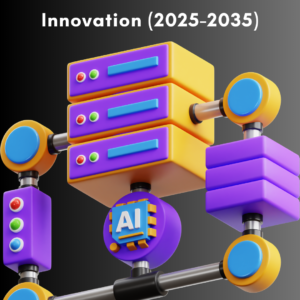1. Executive Summary: The Foundry and IDM Shift
- Key Finding: The emergence of Intel Foundry Services (IFS) and its potential to disrupt the foundry market
- Market Opportunity: $X billion market by 2030 driven by fabless company diversification and geopolitical factors
- Top 5 considerations: Why fabless companies might shift to IFS and its unique value proposition
2. Motivations for Switching to or Ramping Up with Intel Foundry Services (IFS)
- Supply Chain Diversification: Mitigating risk by adding Intel as a second source
- Technological Leadership: Intel’s process technology roadmap and its potential appeal
- Cost and Geopolitical Considerations: U.S.-based manufacturing as a hedge against geopolitical risks
- Case Study: How Company X balanced its foundry portfolio by partnering with Intel
3. The Realistic Value Proposition of Intel Foundry Services (IFS)
- Intel’s Technological Expertise: A deep dive into Intel’s node capabilities and competitive edge
- Potential for Customization: Co-optimization of chips with Intel’s advanced process nodes
- Access to Intel’s IP Portfolio: Leveraging Intel’s extensive intellectual property as a competitive advantage
- Capacity and Scale: Intel’s ability to handle large-scale production
4. Who Are the Potential Early Adopters of IFS?
- Company Profiles: What types of fabless companies are likely to go first?
- Risk vs. Reward: Weighing the benefits and risks of being an early adopter
- Expert Insight: “Why smaller fabless companies may take the first leap” – Industry Analyst’s Perspective
- Case Study: Hypothetical examples of early IFS adoption scenarios
5. Is 5 Nodes in 4 Years (5N4Y) Realistic?
- Technical Challenges: The complexity of achieving 5N4Y and Intel’s current progress
- Comparison with Industry Norms: How Intel’s roadmap compares to competitors like TSMC and Samsung
- Suitability of Product Categories: Which products make sense to move to IFS for 5N4Y?
- Market Sentiment: Industry perspectives on Intel’s ambitious goal
6. Strategic Recommendations for Intel Foundry Services (IFS)
- Building Customer Trust: Strategies for establishing confidence in IFS
- Technological Differentiation: How IFS can differentiate through innovation and partnerships
- Ecosystem Development: Creating an ecosystem to attract fabless customers
- Case Study: How a successful ecosystem was built by another major foundry player
7. Reputation of Intel’s Oregon Fab
- Historical Performance: Evaluating the Oregon fab’s track record in process technology and output
- Strengths and Areas for Improvement: What the industry thinks Intel is doing well, and where it lags
- Comparison to Leading Edge Fabs: Positioning Intel’s Oregon fab against its global counterparts (without naming specific competitors)
8. IDM to Foundry Transition: Opportunities and Challenges for Intel
- Cultural and Operational Shifts Required: Transforming from an IDM mindset to a customer-first foundry model
- What Intel Is Doing Well: Successes in adapting to a foundry business model
- Where Intel Is Falling Short: Key areas needing improvement to succeed in the foundry space
- Case Study: Lessons from a successful IDM-to-foundry transition
9. Customer Considerations in Foundry Selection
- Key Decision-Making Factors: What fabless companies prioritize when choosing a foundry partner
- Risk Assessment: Evaluating Intel as a new foundry partner and its potential to scale
- Strategic Implications: Long-term business impacts of selecting Intel as a second-source foundry
10. Industry Trends Impacting Foundry Decisions
- Shift Toward Advanced Nodes: How Intel’s node roadmap aligns with the industry shift toward smaller geometries
- Geopolitical Factors: The role of national security concerns in fabless company decisions
- Emerging Technologies: AI, quantum computing, and other trends influencing foundry decisions
11. Future Outlook: Foundry Market Dynamics (2025-2035)
- Projected Competitive Dynamics: How the foundry landscape will evolve with Intel’s participation
- Technological Advancements: Anticipated innovations that will shape the foundry market
- Customer Preferences: Evolving needs of fabless companies and their impact on the foundry sector
12. Conclusion: The Path Forward for Intel Foundry Services
- Key Takeaways: Summarizing the value proposition, challenges, and opportunities for IFS
- Strategic Recommendations for Intel: What Intel needs to do to succeed in the foundry business
- Final Thoughts: The future of the foundry industry and Intel’s place within it






